Alexander Hellene's Blog, page 3
March 15, 2021
Great and Holy Lent

Today is the first day of the Great and Holy Lent for Orthodox Christians. It is a time of fasting, abstention from sin, and ultimately forgiveness in preparation of the celebration of the Resurrection.
I pray that Easter 2021 will be better than Easter 2020 for several reasons:
It has been nearly a year since I last attended Church (I last went during one of the Triodion services (the four weeks before Lent), but I cannot recall which one).It has been over a year since I received Holy Communion, because everybody was freaking out about dying of coronavirus despite it being impossible to get sick from the Blood and Body of Christ.We were unable to see the vast majority of our family during Easter last year for the same reasons.I know I need to find it in my heart to forgive those responsible for this state of affairs, including the governments of the Peoples’ Republic of China and the United States of America, as well as all of the other non-state actors who have turned this into such a Godless place, but it’s difficult.
Maybe someday.
See, the thing is that liturgical worship and Holy Communion is a central part of Christian faith and practice. You can’t “be your own church.” You can pray and read the Bible on your own, and you should, and always live the faith, but Scripture is clear that God likes liturgical worship. Take that away, and that’s a huge slice of Orthodoxy right there.
Nobody cares, though. I’m part of the problem too. I didn’t rebel because it’s better to go along to get along. I have too much to lose, and so on and so forth. Maybe instead of asking if I can ever forgive the powers that be, I should pray the Lord and all the Saints can forgive me for being so weak.
March 11, 2021
Music Review: Rush, Fly By Night (1975)

Release Date: February 15, 1975
Personnel:
Alex Lifeson – Electric guitars, six and twelve string acoustic guitars – “Snow Dog”Neil Peart – PercussionGeddy Lee – Bass guitars, classical guitars, all vocals – “By-Tor”Produced By: Rush and Terry Brown
Recorded At: Toronto Sound Studios, Toronto, Canada
Singles:
“Fly By Night”Released: May 1974
Chart Position and Awards:
Billboard 200: #113Certified GOLD and PLATINUM by the RIAA on December 1, 1993Enter the Professor, Neil Ellwood Peart, who joined the band on July 29, 1974, and was soon off with Geddy Lee and Alex Lifeson on Rush’s first American tour.

Their Stateside debut, opening up for Uriah Heep, took place before thousands of screaming Pittsburgh fans on August 14 that same year.
The tour also included a few stops at the Agora Ballroom in Cleveland, where Rush first hit it big thanks to WMMS DJ Donna Halper. As you can tell from these early shows, Peart attacked the debut album’s songs with ferocity, and the whole band seems full of piss and vinegar, intent on winning fans the old-fashioned way: by crushing skulls and eardrums alike into submission.
So yeah, Peart was fantastic right out of the gate, and he not only complimented the band and was able to keep up with Lee and Lifeson, but they had to up their game to match Peart’s intensity and technique. Peart joining Rush is one of those wonderful rock n’ roll coincidences that seems too perfect to not have been planned out in advance. I can’t think of any other one-man replacements to a band that caused such a change like this one.
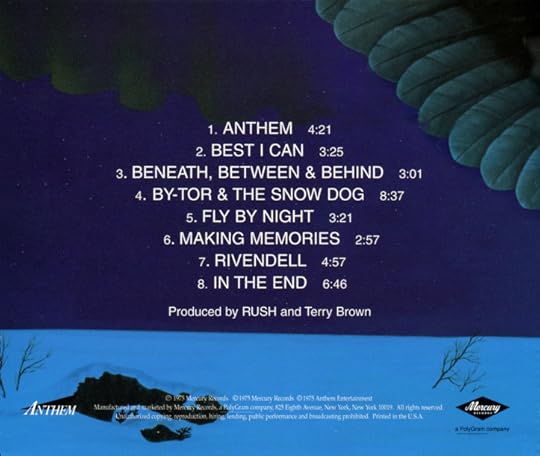
The touring continued to be intense, and the fanbase continued to grow. And the band, of course, wanted to record another album. The question was, when? “Anthem” and “Best I Can” were written before Neil joined the band and would be played live in many of these 1974 shows. Other songs were written on the road, and one, “Fly By Night,” was later integrated into the set. At this time, the band was also still playing some originals that would never see the light of day on a studio album, such as “Garden Road” and “Fancy Dancer,” as well as the old rock n’ roll standard, Larry Williams’s “Bad Boy.”
Another aspect of Peart joining Rush was his vocabulary: to paraphrase Geddy Lee and Alex Lifeson, who had heretofore written the lyrics, they noticed that Neil read a lot and used big words, so they asked him to try his hand at penning lyrics. He did, the band liked them, and Neil Peart was on the road to becoming not only one of rock music’s most beloved and well-respected drummers, but one of rock music’s most beloved and well-respected lyricists as well, while Lee and Lifeson continued to write progressively more challenging and complex material that still rocked hard.

Eventually, the band had some time to hit the studio, returning to Toronto Sound Studios with Englishman Terry “Broon” Brown behind the boards for the first time, a role he’d fill until 1982. Fly By Night was banged out over five days in December of 1974, and then Rush was on the road again before the album was even released on February 15 of the following year.
We’re very happy with it. We recorded it as an album. Singles would be nice, but that’s incidental.
– Geddy Lee, 1975
And what a difference a little over a year makes! Rush was straight-up bar-band blues-rock. From the opening heavy metal salvo of “Anthem,” Fly By Night might as well be by an entirely different band. Oh, sure, Geddy Lee’s galloping, thunderous bass and shrieking vocals are their familiar bombastic selves, and Alex Lifeson’s guitars are as piercing, crisp, and varied as ever, but they sound louder, more confident, and more purposeful. More importantly, the music they’re playing is more diverse, complex, and flat-out creative. And of course, Neil Peart’s impact is immediately felt from Fly By Night‘s first few nanoseconds. Even at the tender age of 22, his playing is explosive yet tasteful, displaying a refinement many drummers will only reach after decades of playing.
 From the liner notes: the band always gave its crew love and treated them well, giving credit in the album sleeves and, for this album, actually printing their pictures. Note that Ungerleider would remain with the band until the end.
From the liner notes: the band always gave its crew love and treated them well, giving credit in the album sleeves and, for this album, actually printing their pictures. Note that Ungerleider would remain with the band until the end.And here’s the kicker: Peart would get better. They all would.
The album is a little schizophrenic, veering from more straight-ahead, blues-rock material with lyrics penned by Lee, to more adventurous, some may say proggy, compositions with Peart’s literary and verbose lyrics. It is here in “Anthem” that Peart’s Ayn Rand fanhood is first displayed; the song is titled after her 1937 novel (the same novel would again provide inspiration for the band one year later on the song “2112”) with lyrics displaying a profound sense of Rand’s Objectivist philosophy of individualism and imposing one’s will on the world. Elsewhere there is “Beneath, Between & Behind” which retells American history using oblique metaphors; the driving pop of “Fly By Night” featuring the first example of Neil Peart’s wanderlust and suburban ennui; “Rivendell,” a light acoustic ballad focused on the Elvish home portrayed in J.R.R. Tolkien’s The Hobbit and The Lord of the Rings (of which all three members of Rush were fans); as well as Rush’s first multi-part epic story-song, “By-Tor and the Snow Dog,” another fantasy-inspired tune that is actually based on an inside joke:
“By-Tor & the Snow Dog” was inspired by Rush roadie Howard Ungerleider’s story of staying at manager Ray Danniels’ house, where Danniels’ German Shepherd growled at him and his other small dog tried to jump on him. Ungerleider told Rush about it and they thought it was hilarious.
So Fly By Night features several Rush firsts:
The first album to feature Neil Peart on drums and lyrics.The first album produced by Terry Brown.The first album to include fantasy themes in the lyrics.The first album to include Randian themes in the lyric.The first album to include a multi-part prog-rock epic.The first album to include Rush’s quirky sense-of-humor in the form of inside jokes inspiring song titles, lyrical content, or both.So that’s enough about the album. What about the songs? For a refresher on my rating system, read this post.
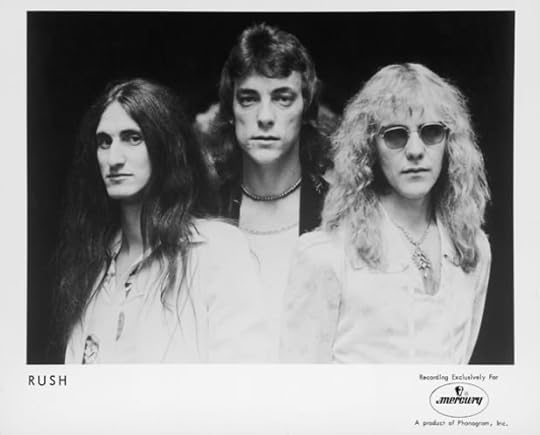
“Anthem” – Music: Geddy Lee and Alex Lifeson. Lyrics: Neil Peart. A perfect slab of heavy metal thunder that rips right out of your speakers like a missile. From the first beat, this sounds like a different band. Neil Peart made his mark on Rush immediately with some insane tom fills and hi-hat work during the jittery 7/8 intro riff. This song is trickier and more technically complex than anything from the first album. The interplay between the three members borders on the psychic, and the main riff screams in with a pounding masculine energy that borders on sexual. There’s a reason hard rock and metal were (are still?) thought of as “guy music” while still attracting a female fan base. This stuff just grabs you by the viscera and doesn’t let go from Alex’s stinging solo until Geddy Lee’s final echoing screams. Just a phenomenal song. Lyrically, this is Randian/objectivist/libertarian stuff about living your own life despite what the “begging hands and bleeding hearts” might demand of you–a far cry from songs about trying to get laid! Quintessential Rush. 9 out of 10.
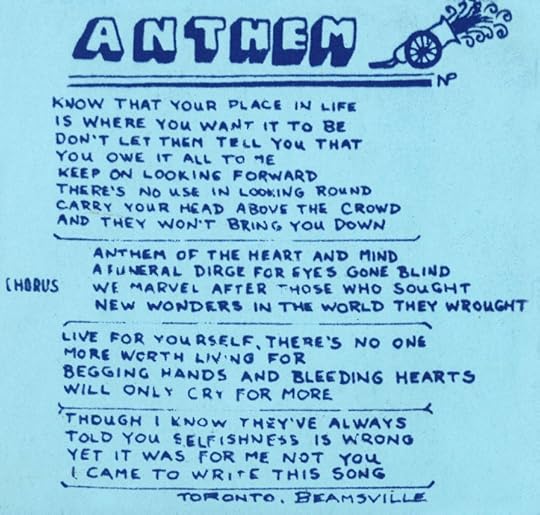 The liner notes also feature these cool handwritten lyric sheets, although as you’ll notice, sometimes the recorded lyrics differed from the written ones.
The liner notes also feature these cool handwritten lyric sheets, although as you’ll notice, sometimes the recorded lyrics differed from the written ones.The band also managed to find time to film promo clips for “Anthem,” as well as “Fly By Night.”
“Best I Can” – Music and Lyrics: Geddy Lee. From the drum intro straight out of the Keith Moon playbook to the tight chords and unison riffing, this song sounds like it could’ve come straight off of the first album, except holy hell that drumming! Neil matches Alex and Geddy’s intensity note-for-note, pushing a rather basic song, written before Neil joined the band, over the top. Great guitar solo. Despite the drum pyrotechnics, though, Neil knew when to lay back into a groove. You can tell Geddy wrote these lyrics without even checking the liner notes, though, since they’re all about rocking and rolling and life on the road, which is a bit of a running theme all across Fly By Night. A bit incongruous and ordinary sounding coming after “Anthem,” but this is a transitional album so it’s bound to be a little jarring as Rush tries out new styles and songwriting techniques. 7 out of 10.
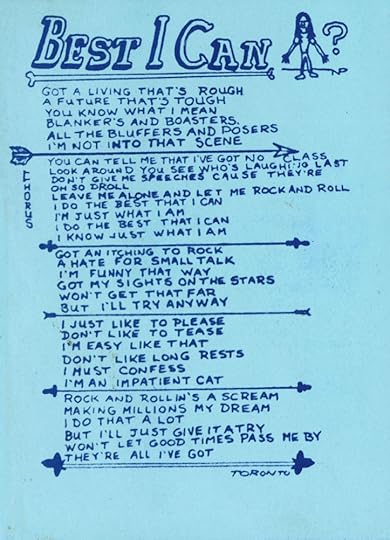
“Beneath, Between & Behind” – Music: Alex Lifeson. Lyrics: Neil Peart. Fantastic, tight little jittery rocker. Even when playing melodically in a major key, Rush still makes it fast and loud; it’s a great juxtaposition that they’d deploy time and again over their career. I love the open, airy power cords and nervous single note riffing. Unreal drum fills, powerful vocals by Lee, and lyrics that seem to discuss the rise and decline of the United States. Another example of how Rush put a lot of care and detail into their arrangements: they rarely play every verse the same way. For example, check out how they dig into a funky groove for the third verse. An excellent song that would remain a live staple into the early 1980s. 8 out of 10.
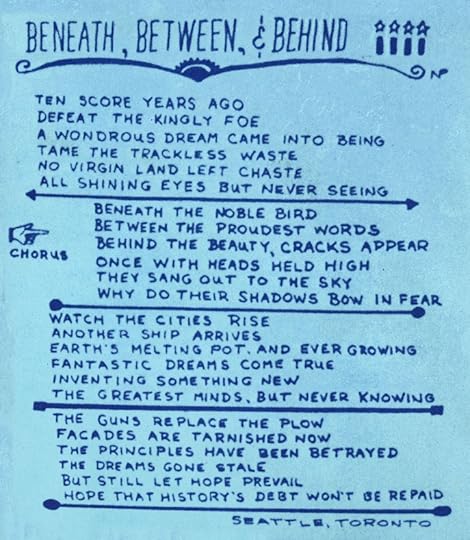
“By-Tor and the Snow Dog” – Music: Geddy Lee and Alex Lifeson. Lyrics: Neil Peart.
I. At the Tobes of Hades
II. Across the Styx
III. The Battle i. Challenge and Defiance ii. 7/4 War Furor iii. Aftermath iv. Hymn of Triumph
IV. Epilogue
Rush’s first multipart prog epic and first fantasy influenced song . . . but also the first song to show off their sense of humor, an underrated aspect of the band. The story was inspired by an incident involving manager Ray Danniels’ two dogs and their nicknames, but Peart transforms the canines into characters fighting for the fate of the world. In this tale, Prince By-Tor is the centurion of evil and the devil’s prince, defeated by the heroic Snow Dog.
Musically, this is a hyper-kinetic yet precise uptempo rocker full of Rush’s trademark nervous energy while remaining catchy and melodic. There is an instrumental break that’s reminiscent of “Working Man,” but cranked to 11 with ridiculous drum fills throughout before some cool odd-time riffs in Part III. I also love the high guitar squeals and low growls that represent the titular characters locked in mortal combat. This leads into an orgy of noise that coalesces into a dirge-like bluesy guitar solo. It’s a good break from the madness before a recapitulation and end. Fun, exhilarating, and ridiculous, but also pointing to bigger ideas to come. 8 out of 10.

“Fly By Night” – Music: Geddy Lee. Lyrics: Neil Peart. One of the world’s most perfect pop songs. A total earworm. Upbeat, melodic, and bittersweet. Great bouncy baseline by Lee, a typically creative Alex Lifeson guitar part, and fantastic drumming. Like usual, even when playing a melodic pop number Rush pound it like a bunch of hyper school children. It’s a great dynamic. Bittersweet lyrics about leaving home. Neil always had a bit of oikophobia, and wanderlust, and this comes out in this tale of wanting to leave one’s homeland to see the world. This is another theme Peart would mine in future songs, helping the band connect with a younger, suburban audience that felt like it had few champions who could articulate what they sensed deep inside. I always found the quiet interlude a little unnecessary, and it breaks the flow of the song, but it bridges the first and last parts and is ultimately satisfying. 9 out of 10.
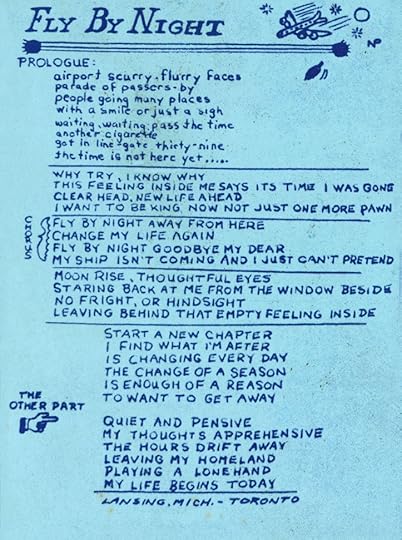
“Making Memories” – Music: Geddy Lee and Alex Lifeson. Lyrics: Neil Peart. A short and sweet acoustic guitar driven hard rocker. Another rumination about life on the road, though very optimistic. Cool slide guitar solo by Lifeson. This song reminds me of the Allman Brothers in their poppier moments. 7 out of 10.

“Rivendell” – Music: Geddy Lee. Lyrics: Neil Peart. Corny and awful. My least favorite Rush song ever (yes, I think it’s worse than “Tai Shan“). I usually skip it, and only listened to it again for this review. Delicate finger picked classical guitar with cheesy lyrics based on the titular location in J.R.R. Tolkien’s Lord of the Rings saga. I’m a huge Tolkien fan, but this song puts me to sleep. Many of the rhymes are super cringe-inducing: Peart actually rhymed “feeling” with “senses reeling.” It just goes on forever and adds nothing to the album. Positives? The classical guitar is nice; I think it’s Geddy playing it. I like the backwards guitar effects in the background of the later verses. Geddy’s vocals are almost all falsetto, and while I applaud the band for branching out, this song just doesn’t work. Rush could do many things, but folksy pastoral ballads were not one of them. 2 out of 10.

“In the End” – Music and Lyrics: Geddy Lee and Alex Lifeson. A decent album closer, and not just because of the title. Pretty twelve-string acoustic guitar in the intro. A perfectly fine, serviceable, well-played mid-tempo rock song with yet another very emotional solo by Lifeson. Very clean, but musically the song is a bit pedestrian compared to much of what came before. Good, but nothing special. It certainly doesn’t match the intensity of the album’s opener, nor does it push the band further like “Anthem,” “Fly By Night,” “By-Tor and the Snow Dog,” or “Beneath, Between & Behind.” Still, it’s satisfyingly somber. 7 out of 10.
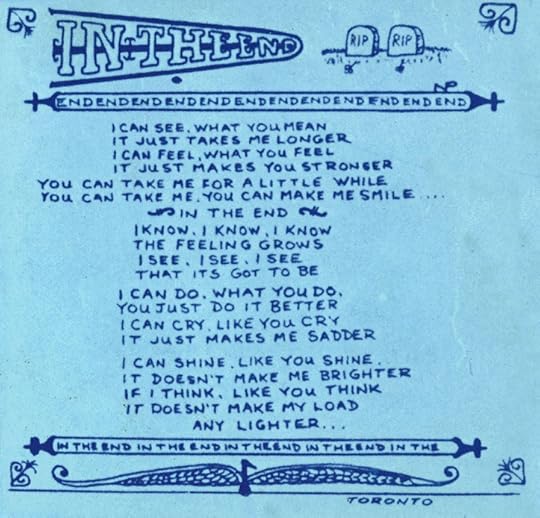
Final Rating: 57/80 = 0.7125 x 100 = 71.25
This rating may seem a little low, but I think it’s appropriate. “Rivendell” really brings the score down, but I am judging these as cohesive albums and not just collections of random songs. I’m looking at flow and theme and overall feel. And while Fly By Night has some good, really unique stuff on it and fantastic energy and playing throughout with a loose theme of life on the road, it’s musically scattered and only about half of the songs reflect a songwriting progression.

But it’s Neil Peart’s first album, and the band was experimenting with the new guy, pushing themselves in all sorts of new musical directions and trying on new songwriting styles and techniques. More importantly, the album and subsequent heavy touring, supporting Kiss and Aerosmith, among others, broadened Rush’s already rabid fan base and set them up as a band to watch.
Fly By Night is no masterpiece, but it’s a fun, well-played slice of head-banging 70s heavy rock that shows a band stretching beyond the blues-rock format and pointing to ideas so big they’d soon encompass entire sides of albums. Still, it is here that Rush began producing a song or three that you truly cannot describe in relation to another established band. Rush were rapidly becoming their own unique and weird rock and roll beast.
Contemporary reviews similarly noted Fly By Night‘s scattered feel, but later, when placed in the context of Rush’s 40-year career, Fly By Night can be recognized as one of the band’s most crucial turning points, from bar-band bangers to prog-metal pioneers:
In a review for Statesville Record & Landmark, Pam Simon thought the album “is a strange schizophrenic album, almost evenly divided between second-rate acoustic music and the dated concept of the power-trio format”. She was critical of their more heavy metal direction and the pretentious nature of their songs and picked out “By-Tor and the Snow Dog” as such an example which she called “especially horrendous”. Though Simon praised Lifeson’s “more than competent” guitar work and Peart’s drumming, she criticised Lee’s voice for sounding too similar to Robert Plant. Michael Dolgy in RPM Weekly wrote the album is “a loud but sensitive excursion into ball-blaster rock/roll.” Greg Prato of AllMusic said that the album was less straightforward than their debut album, and while it was not one of their best albums, it was one of their most important.
Ultimate Classic Rock included the album on their list of the “Top 100 ’70s Rock Albums”, writing “Neil Peart wasn’t just the new drummer; he was the spark that pushed them to greatness.”
Read the RPM Weekly review here.
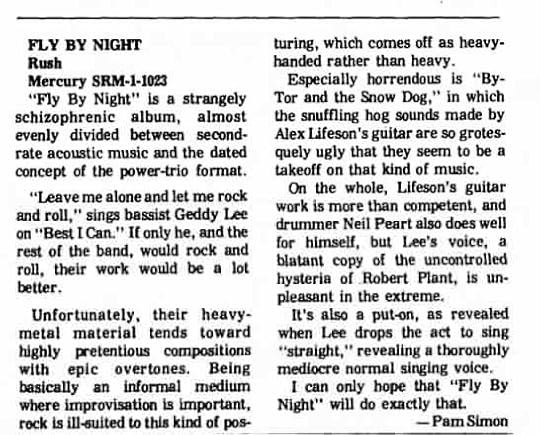
I always found the comparisons between Geddy Lee and Robert Plant confounding. To my ears, the two men’s voices sound nothing alike. But like most journalists, the music press is lazy and once one reporter uses a term or makes a comparison, they all do. Some things never change.
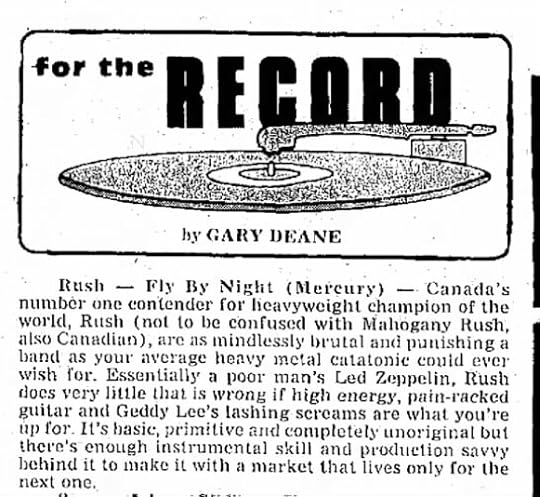
It always cracks me up reading these reviews from the mid-1970s where they’re already declaring rock and roll outdated or dead.
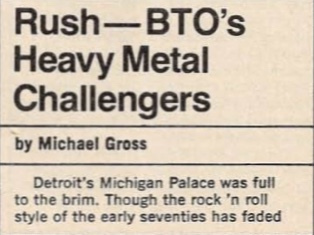

Ultimately, while Fly By Night is not Rush’s objectively best album, it makes a good argument for being one of its objectively most important ones. I recommend it, not as your first Rush album, but a must-buy if you’re already a fan of their more well-known and popular stuff.
Buy the album here.
THE COVER
Cover concept: Rush (really, Neil Peart)
Painted by: Eraldo Carugati
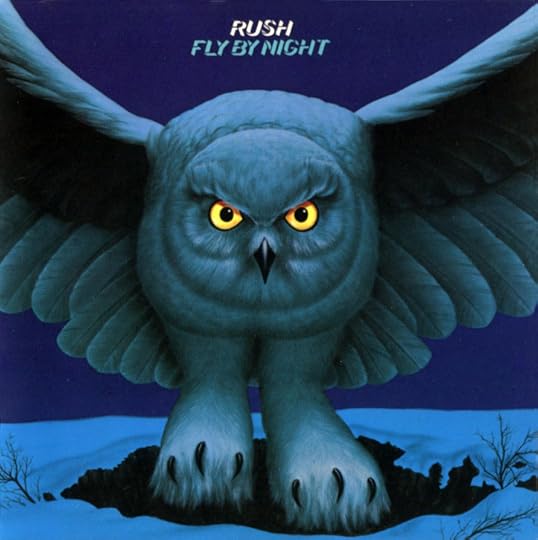
The cover to Fly By Night features a giant snow owl in a frozen winter tundra at night, it’s yellow eyes piercing into your soul. It just screams “WE’RE FROM CANADA” and that’s what makes it so awesome. It’s the cover of a band forging a new identity and taking the time to integrate its visual aesthetic with the musical, and it works nearly flawlessly.

When I listen to “Anthem,” “Fly By Night,” or especially “By-Tor and the Snow Dog,” this image pops immediately to mind.
It’s important to note that, in addition to drumming and lyric duty, Neil Peart took on the role of Rush’s visual director. From Ultimate Classic Rock:
Neil Peart made his drumming and lyric-writing debut with Rush’s second LP, 1975’s Fly by Night. He also took on another, less famous role: conceptualizing its bold cover image.
“One of the first lyrics I submitted to [guitarist] Alex [Lifeson] and [bassist] Geddy [Lee] was ‘Fly by Night,’ and when the time came to make our first album together, we decided that was a good title,” Peart wrote in the introduction to The Complete Tour Books 1977-2004. “As a bird lover since childhood, I remembered an illustration of a snowy owl swooping down toward the viewer with fierce eyes, and I suggested an image like that for the cover, maybe with the northern lights in the background.”
The prog-rock trio was still a few months away from hiring art director Hugh Syme, who’d contribute to every subsequent Rush LP, starting with their follow-up, Caress of Steel. That temporary role fell to Jim Ladwig and AGI Chicago, with the visual crew rounded out by designer Joe Kotleba and painter Eraldo Carugati — the latter of whom later worked on the four Kiss solo albums from 1978.
Together they brought Peart’s simplistic idea to life. But the drummer still had to do the early legwork.
“It fell to me to talk on the phone to the record company artist in Chicago and try to describe this picture in words,” Peart recalled. “In the same way that writing those few lyrics for the band would lead to me becoming the band’s chief wordsmith, that phone conversation led to me becoming the ‘graphic arts supervisor.'”
The cover isn’t a major work in the Rush catalog — far from the intricate, often philosophical designs Syme would cook up in the late ’70s. But that owl’s eerily yellow eyes added a hint of mystery to Fly by Night, mirroring the album’s gradual evolution from pure hard-rock into a proggier, more imaginative sound.
I beg to differ. I think this is a very important cover in the Rush catalog. It shows that Rush was determined to handle all artistic aspects of their work, and furthermore, looking at this, you know immediately it’s going to be Canadian-made heavy rock that’s a little bit out there. Legendary cover.
Cover Rating: 9
Thanks to Cygnus-x1.net for the scans.
If you enjoyed this deep dive into the Fly By Night album, you’ll love my deep dive into the world of Rush FANS. Buy it here.
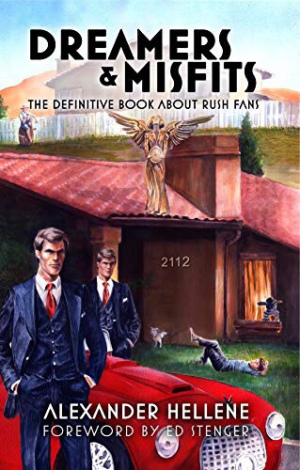
March 10, 2021
When Even Your Jokes Predict the Future

Well friends, it’s been often said that authors, poets, musicians, and other artists are ahead of the curve and see things before everyone else does. I’d like to point out this admittedly hilarious joke I sent out into the World Wide Web back on March 2:
Gen Z’s grandkids gonna rebel by coming out as straight. pic.twitter.com/Ji2j3Bhzjx
— Alexander Hellene
(@AHelleneAuthor) March 2, 2021
Classic Alex: gently mocking while being so absurd you can’t imagine anybody actually getting offended, except of course people did because this is 21st century America.
Anyway, he might not be Gen Z, and he might not be rebelling against his grandparents, but look at what happened yesterday, March 9:

March 9, 2021 (LifeSiteNews) — Milo Yiannopoulos, the gay man whose conservative messaging and willingness to speak the truth sparked riots on university campuses may well trigger more outrage now that he describes himself as “Ex-Gay” and “sodomy free,” and is leading a daily consecration to St. Joseph online.
Two years ago, when Church Militant’s Michael Voris famously challenged Yiannopoulos to live a chaste life, Yiannopoulos was not defensive. Instead, he acquiesced, and humbly admitted his human weakness.
“I know everything you’re saying, and I’m just not there yet. And I don’t know if I’ll get there,” Yiannopoulos told Voris at the time.
It seems that he has now arrived “there.”
LifeSite: I imagine that to many who follow you, your recent decision to publicly identify as “Milo, Ex-Gay” may seem like a 180-degree turn. Are you also surprised that your life has taken this turn? Or is it unsurprising, a natural and perhaps inevitable progression in your life? I ask this because over the last few years things that you’ve said have hinted at being drawn in this direction.
Milo: When I used to kid that I only became gay to torment my mother, I wasn’t entirely joking. Of course, I was never wholly at home in the gay lifestyle — Who is? Who could be? — and only leaned heavily into it in public because it drove liberals crazy to see a handsome, charismatic, intelligent gay man riotously celebrating conservative principles.
That’s not to say I didn’t throw myself enthusiastically into degeneracy of all kinds in my private life. I suppose I felt that’s all I deserved. I’d love to say it was all an act, and I’ve been straight this whole time, but even I don’t have that kind of commitment to performance art. Talk about method acting …
Huh. Interesting!
Naturally, all the right people are losing their minds over this, probably more so due to Yiannopoulos’s Christian faith than his heterosexuality, but I’m sure that doesn’t help either.
This is the world we live in, where the word and the very idea behind “normal” is under attack as unfair or whatever. Being straight is normal. This is one reason why it will not do.
I mean, good for Milo. I buy this as genuine and not a grift for a few reasons, but maybe it is just for attention though. Who knows? Some thoughts:
Is this any different than actresses who come out as “bi” or “non-binary” or whatever?I’ve known individuals who wished they weren’t gay. Maybe some people can actually change this aspect of their lives? If one can be a woman trapped in a man’s body, can’t they be a straight man trapped in a gay man’s body?Love is love.Milo was just born this way.Sexuality is fluid.Sexuality is a social construct.Why should he be judged by whom he sleeps with?What Milo does in the privacy of his home is his own business.Hate has no home on this website.To put a finer point on it: the fact that sexuality and sex is basically all that seems to matter in America, and that you can get fired, I mean canceled, for being in sufficiently enthusiastic about certain lifestyle choices sure says a lot. But this is the world we live in.
So coming out as straight is super-edgy and will probably end Milo’s career. Oh wait, he’s already been canceled. So why are all the people talking about someone so irrelevant if he’s so irrelevant?
That’s not a rhetorical question, but it does involve rhetoric. Because this hurts the Narrative. So there you go.
Now for the second part:
“What does this have to do with books and writing?” you may be asking. I’ll tell you: First, no idea you have is as preposterous as what will actually eventually happen in the real word.

Can you envision a disastrous, shocking, dystopian, absurd, or chilling scenario? I guarantee it either has come to pass already or will come to pass in your lifetime. So write it down, make a story, and get it out there while the iron is hot so you look like a prophet and reap said rewards. This is advice I didn’t follow with a novel I wrote between 2011 and 2012 that, if published at the time, would make me look like Nostradamus.
Second, stay true to yourselves and write about what you want, because the people who hate you will hate you and have a problem with your work no matter what you do. Say the course, friends. Be brave.
And third, keep thinking, keep dreaming, and keep creating. We need visionaries and truth-tellers to show us both what can (and will) go wrong, but also what to do about it.
Fun sci-fi adventure that doesn’t get into all this stupid sex stuff:
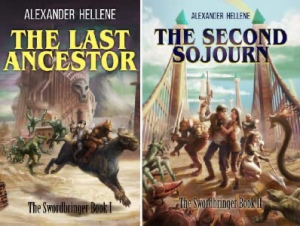
March 8, 2021
Vent Switch: Why I Am Not Against Canceling

Based upon my observations, some facts about the latest American absurdity we all know and hate: canceling.
First, the terms “canceling” and “cancel culture” are, like nearly everything else in American culture, dumb sounding and immature, the fruit of intellectually and spiritually stunted minds. But that’s a hurdle we’re just going to need to get over because this is an intellectually and spiritually stunted country.
Canceling, at its base, is about removing a person or idea from the bounds of acceptable discourse. This can be done, contra to many idiots who tell you otherwise, by any combination of government, private entity big business, tech corporation, or any other organization with (a) a common set of values and (b) a vested interest in ruthlessly punishing anyone or anything to violates those values.
Our misfortune is that the powers that be all have the same values, and their values are evil.
It works like this:
Someone or something is found to have violated those values.The powers that be mobilize their shock troops, usually really, really, really emotionally unstable, low-value, and easily manipulated freaks online, to point and shriek.Those in charge use the pointing and shrieking as proof that the person or thing they’ve targeted is evil.These entities coordinate their efforts to make association with the thing or person professionally and personally costly.The person or thing is not allowed to conduct their business because all sympathetic and amenable authorities conspire to keep them pushed to the margins.Anyone who dares to associate with the canceled person or thing is likewise smeared and canceled.It’s not that difficult, but people get the process and the point of it wrong all the time. It is censorship by another name, but the difference is that it’s not done by the government. This is what makes it worse.“Private businesses can do anything they want!” libertarians and conservatives say (to be fair, many progressives do as well to mock conservatives and libertarians who complain). But like usual, they neglect several important points, among them:
The government has outsourced censorship. That is the great American innovation: privatizing oppression.No one and nothing gives private businesses the right to control so much of the public discourse.No one and nothing gives private businesses the right to dictate who can engage in commerce.There are many other misconceptions, both deliberate and accidental, about canceling that I have seen. Here are a few:
Canceling is not, for example, Christian parents refusing to expose their kids to disgusting and degenerate mainstream American culture.Canceling is a coordinated effort among all channels of production and commerce to refuse selling something.Canceling is not a boycott whereby private citizens decide en masse not to give money to people who hate them.This last point about boycotting is one thing that drives me nuts. Progressives and libertarians do the same thing: “You hypocrites are against canceling but you boycott!” Yet there is nothing hypocritical about choosing not to spend money on things created by people who hate you, and encouraging others to do the same. A boycott does not remove a person or thing from the public discourse. It is merely a signal that you and others of a like mind object to said thing or person and will be taking your business elsewhere. Like usual, though, extremely online libertarians laugh at and mock private individuals doing something that is not censorship or canceling, yet defend big businesses from doing the actual censoring and canceling. I just don’t understand it, and I’m just as embarrassed that I used to call myself a libertarian as I am that I used to call myself a conservative.
A few final points about canceling:
It works.It should have been used by normal people decades ago.Being against the censorship or removal from public discourse of destructive ideas is so stupid that it beggars belief. “I disagree with what you say but defend to the death your right to say it” is, shall we say, a cognitively impaired point of view. Censorship works and should be used to nip bad ideas in the bud. “If you censor or ban something you get more of it!” is total nonsense. If that was the case, all of these canceled people and things would have greater influence now than they did pre-cancellation. Yet they don’t.
People love to use the argument about Prohibition, but what they decline to tell you was that Prohibition worked. Alcohol consumption and alcohol-related deaths dropped sharply and there is evidence that it didn’t lead to a massive increase of crime and violence.
Further, this anti-censorship free-speech purity, like most pie-in-the-sky libertarian fantasies, only works if every single person is on board. You only need one defector to ruin things. Unfortunately, our defectors are the entities who have all the power . . . power given to them by ostensible opposition that didn’t oppose anything.
It feels good to say you’d never burn books, and the book burners were always the bad guy, and so on. But it doesn’t matter. When the baleful Eye of Progressivism turns on you, your moral high ground won’t protect you one fraction of an iota. All that matters is friend/enemy. Wake up and get in the game.
Anyway, imagine where we’d be if we censored all of the horrible ideas that are now mainstream instead of actually taking groups like the ACLU seriously defended reprehensible speech. We wouldn’t have actual, literal demons saying stuff like this, and you being punished for disagreeing with them:

As always, the end result of progressivism is sex with children. And as always, the slippery slope is not a fallacy, but an iron law.

March 5, 2021
Under the Gun

There’s a storytelling trope that I’ll paraphrase: the harder you can make your protagonist’s life, the better.
Books, movies, TV shows, plays, whatever–audiences want to see their heroes succeed, but want to see them struggle to do so, to overcome seemingly insurmountable obstacles and, through skill, grit, and determination, never give up and win the day.
This is why we thrill at little hobbits taking down Sauron . . . a middle-ages scholar with his infant daughter in tow facing down a robotic killing machine from the future . . . one man saving his daughter from the exiled former President of a Latin American island nation . . .
You get the idea.
If it’s too easy on our hero, we’re bored. If our heroes overcome everything in a manner that is not believable, we’re not taking it seriously. It’s a fine line.
There’s a certain subset of this, though, that I like. I like stories where the heroes are always under the gun, on the run, being thwarted by villains who are just a little bit quicker or cleverer. And while the hero doesn’t lose all the time, they certainly don’t have an easy go of it.
The technical term for this is “misdirection”: make your reader think A is going to happen, but have B happen instead. I find this description still inadequate to explain what I’m taking about, so let me give some examples:
Brian Niemeier is really good at this. Both his Soul Cycle and Combat Frame XSeed do this great. Just when you think the good guys are going to pull it off, here comes the bad guys to foul things up. Remember: your enemy always gets a vote.Ben Cheah‘s Dungeon Samurai also pulled this off with aplomb. You never knew who was going to make it out alive.Jon Mollison is likewise good at this. I‘m always on the edge of my seat reading his stuff. Sudden Rescue was particularly thrilling.These fine authors will hate to be associated with this movie, but the one thing The Last Jedi did well was create this sense. Of course, this was done more to subvert than to tell a good story that makes logical sense, but credit where credit is due.Anyway, some techniques, which can be combined in many different ways, include:
A recurring villain the heroes cannot beat.An alternate defensive villains’ plan the heroes didn’t know about.A defection, a traitor, or a double agent in the heroes’ midst.The heroes having bad information.A strict time limit that raises the stakes.This is just a small sampling, and a way for me to try describing a storytelling trope I’ve been having difficulty articulating for a while. Why do some of these tropes work really well, while others are just cool but not exciting? I don’t know. I suppose it all comes down to execution.
I add these elements to my own writing. Check out some action-packed, high-stakes sword-and-planet here.

March 3, 2021
Everybody Saw This Coming *UPDATED*
 I mean, freakshows are proud of getting Homer banned. Why would they stop there?
I mean, freakshows are proud of getting Homer banned. Why would they stop there?
Dr. Seuss Enterprises will bravely stop publishing six little-known books by Seuss, who is not a real doctor, because some brittle people of a certain chromatic disposition and their pale enablers have hurt feelings about the portrayal of certain people in said books.
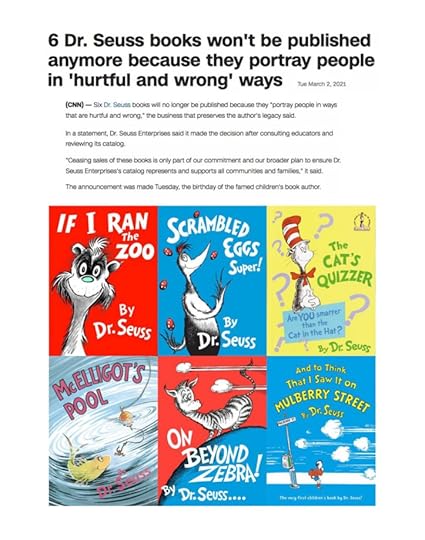 Nobody is surprised. And none of this is new. This happens every early March (Seuss’s birthday) when schools have a week of all things Seuss to celebrate the man and his works.
Nobody is surprised. And none of this is new. This happens every early March (Seuss’s birthday) when schools have a week of all things Seuss to celebrate the man and his works.
I don’t even care much for Seuss, but screw them. Because at this rate, all we’ll be allowed to read, see, listen to, and otherwise enjoy as our so-called culture will be stuff created yesterday.
This is pure racial grievance, plain and simple. Stop kidding yourselves. My guess is that weirdo Ibrahim X. Kandi’s bit of pernicious racial propaganda masquerading as a kid’s book will soon be replacing Seuss and many others in your children’s classrooms.
America is toast as a viable functioning entity if we are still arguing about nonsense like this. Get in the game.
Two salient points to all of this:
Be careful to whom you entrust your legacy; andHave children and encourage them to have children and remain involved in their lives to teach them so your legacy won’t go belly up once you die.Alternately, do as author J.D. Cowan suggests, and leave your legacy to the public domain so nobody can make money off of ruining it. Race-obsessed kooks are why we can’t have nice things like Classical Greek literature (my culture which these losers with no accomplishments of their own are hellbent on erasing, so yes, I take it personally) and children’s books.
Buy physical copies. Do not comply. Call people out and make fun of them. And if worse comes to worse, help burn it all down.
Metaphorically, of course.
UPDATE:
Brian Neimeier, a very smart fellow, reached the same conclusion I did (emphasis mine):
You have heard it said, “Don’t give money to people who hate you.” An important addendum is don’t leave your life’s work in the hands of people who hate you.
This advice is especially important for writers. Authors are already notorious for having high time preference. Few spare a thought for what will become of their work after they shuffle off this mortal coil. Let Dr. Seuss’ fate serve as a warning. Make sure you’ve got a will, and look into setting up a trust to handle your IPs postmortem. You want your kids to reap the benefits of your legacy, not some faceless megacorp.
That brings us to the second unexamined angle of the Seuss censorship story. The outfit that controls Seuss’ books is being called a foundation, the implication being that they’re some kind of charity. In reality, they’re owned by Simon & Schuster-Penguin-Random House.
Let that be another warning to authors against signing with oldpub. Perhaps before this debacle, writers could be forgiven for seeking a big book deal because the need for validation exceeded their business acumen. Now, signing with oldpub means asking a publisher that hates you to pillage your literary legacy and your children’s inheritance.
The actions of Simon Penguin’s House should also sound a wake-up call to those who still think woke capital has a profit motive. The Death Cult understands what Conservatives obstinately refuse to: that they who control art control the culture.
He who can destroy a thing, controls a thing.
Keep control of your work. The tools and knowledge to write your own stories and reach your target audience are at your fingertips. Find like-minded creators who can help you hone your skills, and support each other.
Right on.
You can help keep the weirdos who want to rewrite history at bay by purchasing physical copies of my books–plus you’ll get Manuel Guzman’s gorgeous cover art in its full glory.
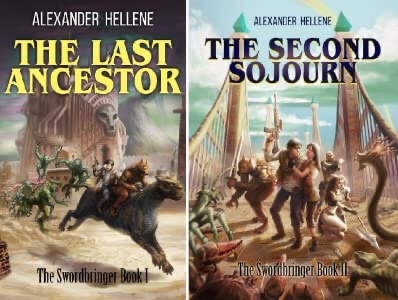
March 1, 2021
Music Review: Rush, Rush (1974)
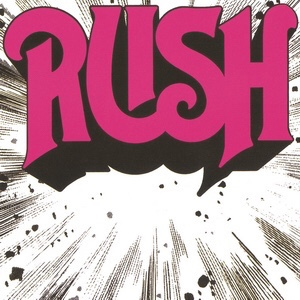
Release Date: March 1, 1974
Personnel:
Geddy Lee – Lead Vocals & BassAlex Lifeson – Guitars & VocalsJohn Rutsey – Drums & VocalsProduced By: Rush (final recordings at Toronto Sound Studios) and Dave Stock (initial recordings at Eastern Sound)
Recorded At: Toronto Sound Studios and Eastern Sound
Singles:
“Finding My Way”Released: August 1974“In the Mood”
Released: 1974
Chart Position and Awards:
Billboard 200: #105Certified GOLD by the RIAA on February 1, 1995All songs composed by Lee & Lifeson except “In The Mood” composed by Lee
Rush began life as a bar band in 1968, playing covers by the likes of The Who, Cream, The Yardbirds, and Blue Cheer. They got really good and really popular, and began incorporating originals into their set. By 1973, childhood friends Geddy Lee, Alex Lifeson, and John Rutsey, decided an album would be in order, which they bankrolled themselves.
The first stab at the album was done in eight hours following a gig. We were warmed up after the show, and it came very easy. Then it was recut in November in about three days, including mixing time. We were lucky in that most of the songs came in two or three takes.
– Alex Lifeson, 1974
Showing a lot of initiative, Rush set up theit own label called Moon Records and released the album themselves; bold and admirable. Things were slow until a DJ at Cleveland’s WMMS named Donna Halper heard the album, really liked “Working Man,” and began playing it, thinking it would go over well in Cleveland. Halper was right: the album took off, and before anyone knew it Rush were off to get a real record deal with Mercury and designs to tour the United States where they were suddenly really popular.
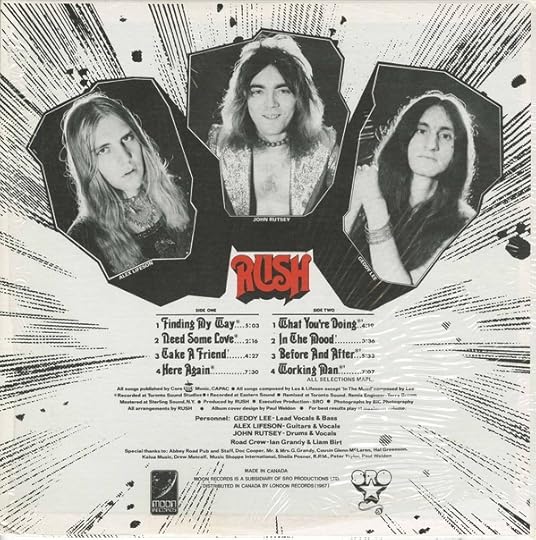
And tour they did. The guys were total road dogs. But that’s how they built up their audience and honed their chops.
First things first: Neil Peart does not play on this album. And John Rutsey is no Neil Peart. This is fine for two reasons: After all, who is? And Rutsey is a fine drummer in his own right. His groove is hard, his fills solid and perfect for the songs, and he has great interplay with Lee and Lifeson. One can only imagine Rush boogieing along as a damned good meat-and-potatoes rock outfit if Rutsey hadn’t left the band (it was a combination of health reasons making Rutsey unable to tour, and the oft-cited “musical differences”).
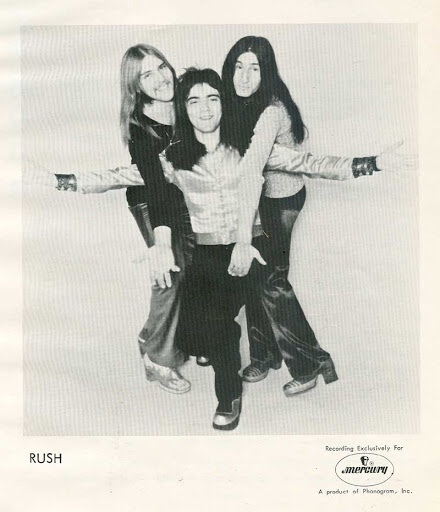
On to the songs. For a refresher on my rating system, read this post:
“Finding My Way“: Rush’s first album kicks off with what will quickly becomes a Rush hallmark: excellent, exuberant, high-energy opening tracks. A Who-like opening riff sets the mood, building with bass-and-drum hits before the band is off to the races with Geddy Lee shrieking like a banshee. What’s striking about this song is how precise and tightly Rush play this early into their career, especially Alex and Geddy. The song, and album as a whole, just sounds really good too: crisp guitars, punchy drums, and a meaty bass tone. Lyrically, “Finding My Way” is typical rock and roll trying-to-get-some-action type of stuff. It’s straight-ahead meat and potatoes rock, nothing mind-blowing or especially striking, but it sure is fun. 7 out of 10.
“Need Some Love“: Short and punchy, up-tempo boogie-woogie blues, almost punk in energy and spirit. Really great drumming from Rutsey. “Need Some Love” sounds like a cross between Lynyrd Skynyrd and Bad Company until the guitar solo section, which sounds like something off of Led Zeppelin‘s first album. That’s a compliment, by the way. Inconsequential, but fun. 7 out of 10.
“Take a Friend“: Perfectly good, serviceable, midtempo hard rocker. Nothing revelatory, but it shows that even this early on Rush had a gift for orchestrating their songs and putting a lot of care into them. They were much more thoughtful in detail oriented than many of their headbanging peers who just thrashed away at their instruments. Each verse has some little addition or change to set it apart from the others. Monstrous bass sound and really cool drum fills. A showcase for Alex’s guitar playing, who is already proving himself to be someone to watch. I like the cycling triad riff that bookends the song. 6 out of 10.
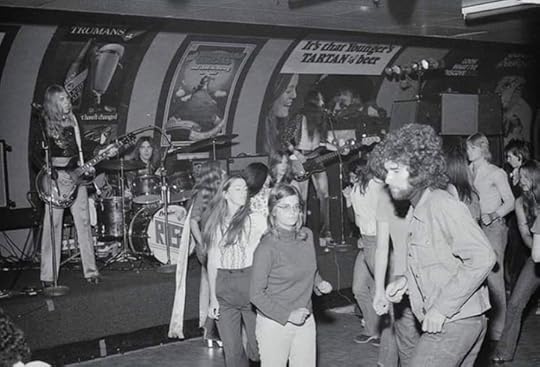
“Here Again“: Never-ending slow blues. Very well played and well thought out, with fantastic vocal performance by Geddy doing his Robert Plant best, but still: the song has no real hook. Contrast that with a Led Zeppelin slow-burner like “Since I’ve Been Loving You” to hear what I mean. Still, it builds to a satisfying conclusion. Great guitar solo; it’s amazing how good Alex Lifeson was right out of the gate. You can tell the band is road-tested by how tightly they play. Nice acoustic guitar in the verses. I like how Alex adds phased guitar arpeggios in the second verse to keep things interesting. The cord progression reminds me a little bit of Greek rembetiko music. This is not a bad song, just an unremarkable one. 6 out of 10.
“What You’re Doing“: Fantastic Zeppelin-inspired stomper. This song is full of excellent, tricky unison riffing and sounds like a warm-up for stuff like “Beneath, Between & Behind” they’ll be writing soon. High energy drum fills. Rutsey really doesn’t get enough credit. Excellent guitar solo; it’s as though Alex Lifeson hit the Jimmie page switch on his amp. Derivative, but that’s okay. Might be my favorite song on the album, though not the best. Big fun rock ending too. 8 out of 10.
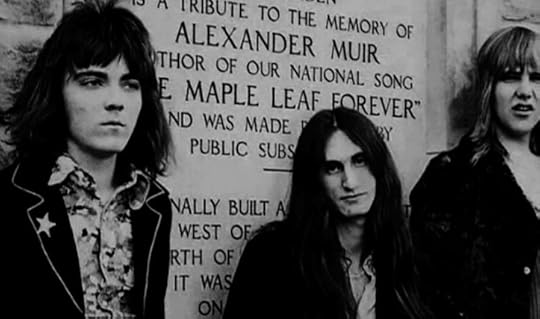
“In the Mood“: Straight up boogie-woogie cock rock, complete with cowbell, and I love nearly everything about it. Really stupid lyrics. Fun riffing. This song overcomes it’s generic nature thanks to energetic playing and creative guitar overdubs. No wonder it became a fan favorite. Bonus: it doesn’t overstay its welcome. Dumb but catchy. 6 out of 10.
“Before and After“: Very pretty. At first you think it is going to be a country influenced, pastoral ballad. Some of the guitar work reminds me of the last part of “The Necromancer” from Caress of Steel. And then it takes an abrupt dramatic left turn into hard rock city. Another Zeppelin-inspired riff fest. Not the hookiest song, but fun and exuberant regardless. Nice groove. 6 out of 10.
“Working Man“: The big one. The song that put rush on the map. Huge in Cleveland. Objectively the best song on the album. An absolutely thunderous dark midtempo rocker that explodes into power trio goodness. “Working Man” shows that Rush had the ability to indulge in some improvisational freak-outs, though even at this early stage they were never as loose or limber as Led Zeppelin, Black Sabbath, or Cream. Even when jamming, Rush was always structured and disciplined and not free wheeling. This isn’t a bad thing, just a stylistic quirk. Reminiscent of Live at Leeds-era Who, complete with a big rock ending. No wonder it remained a concert staple for 40 years. 8 out of 10.
Final Rating: 54/80 = 0.675 x 100 = 67.5
A respectable score, and one that reflects how I feel about the album. It’s fun and good and technically well-played and well-written with some thrilling moments, but it’s not groundbreaking, nor does it do anything that really stands out, save for “Working Man.” Remember: a seven is a song that’s good and catchy and enjoyable, but lacks that certain something that pushes it to the next level. I’d say they taken as a whole, Rush’s debut album, fits that bill if you round my rating up to a 70.
As mentioned above, this was John Rutsey’s first and only album with Rush. He would be removed from the band due to both health reasons (he was diabetic, and his drinking didn’t help) making him physically unable to withstand the rigors of touring, and musical reasons–Rutsey wanted to keep the band straight ahead rock while Lee and Lifeson were pushing i a more complex, prog-oriented direction. For example, the band wrote “Anthem” when Rutsey was still in the band, but he didn’t like it and/or couldn’t play it, depending on whom you ask.
In any event, Rutsey was out of the band he helped start and grow, and Neil Peart was in after a hasty audition which blew Lee and Lifeson away but gave Peart mere weeks to learn Rush’s set before they embarked on their first American tour. John Rutsey would sadly pass away in 2008 at the age of 55 of a heart attack related to complications from his diabetes. RIP Rutsey, and Godspeed.
Contemporary reviews were generally positive, and are pretty close to my assessment here:
Rush received positive reviews upon its 1974 release. Writing for the Ottawa Citizen, Bill Provick gave praise on the band’s “immediate acceleration” and “driving, crisp sound”, although he felt that “the energy needs a bit more channeling and the arrangements need a touch more refining”. Billboard wrote that it “serves up a dose of good hard rock highlighted by the often Robert Plant-like lead vocals of Geddy Lee and the powerful guitar work of Alex Lifeson and solid drumming from John Rutsey.”
However, critical reception in later years has been less enthusiastic. Greg Prato of AllMusic stated in his review of the album that it was weaker than some of the band’s later works, such as Hemispheres and Moving Pictures, because Neil Peart was not yet a part of the band. He finished his review by saying, “While longtime Rush fans can appreciate their debut because they never returned to this style, newcomers should stick with their classics from later years.”
Rush is well within the “recommended threshold,” but unless you’re a blues rock guy and don’t care for prog at all, I wouldn’t recommend starting your Rush journey here.
Buy the album here.
T HE COVER
Designed by: Paul Weldon
Let’s look at that cover again!
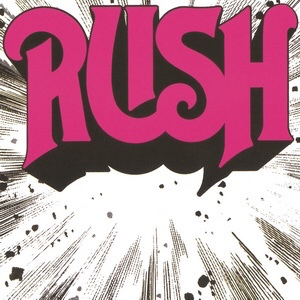 The Mercury Records release.
The Mercury Records release.It’s got that classic Rush logo exploding in your face in hot pink! It’s awesome, well-composed, and fits the band and it’s name, and it catches your eye . . . but it doesn’t really tell you anything about the music or the band behind “Here we are and we’re explosive.” It’s cool looking, and that’s about it!
From Ultimate Classic Rock:
Paul Weldon’s design conveyed the primal power-trio energy of early staples like “Working Man” and “Finding My Way,” as he noted in Jon Collins’ 2005 book, Chemistry. “I used the explosion graphic because I felt that it represented the nature of the band,” he recalled. “For a three-piece group, they had a lot of power and force in their sound.”
The simplicity was also a practical matter. As Weldon noted, “In Rush’s early days, they didn’t have much money and so I kept it to a [two-color scheme].”
Fun fact: the original pressing had red font. When Mercury records signed the band and released the album in the United States, somebody screwed up, and the font became pink. Oops!
 The original Moon Records release.
The original Moon Records release.Cover Rating: 6
I hope you enjoyed this first foray into reviewing the Rush catalog. If you did, you’ll love my book Dreamers & Misfits, which is all about Rush FANS. Buy it here. We’ll see you at Fly By Night.

February 27, 2021
Book Review: The Gulag Archipelago by Aleksandr I. Solzhenitsyn: Part Two: “Perpetual Motion,” Chapter Three, “The Slave Caravans”
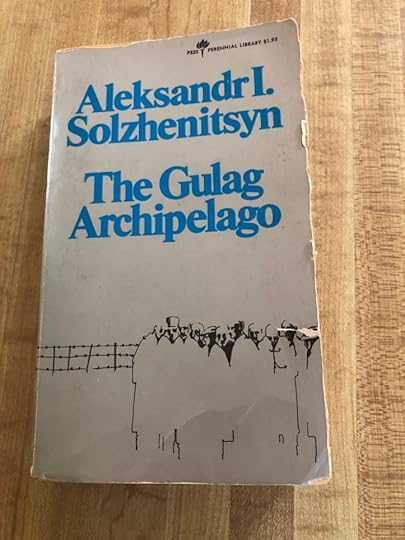
It was painful to travel in a Stolypin, unbearable in a Black Maria, and the transit prison would soon wear you down–and it might just be better to skip the whole lot and go straight to camp in the red cattle cars.
Reading The Gulag Archipelago can be an exhausting experience. There are only so many ways one can describe the brutality with which the Soviet state transported prisoners and how they were treated on various modes of transportation en route to the Gulag. One can only read so much about the abuse heaped upon this wretched lot without wanting to put the book down. This is not because Solzhenitsyn is a bad writer, or the information he conveys is not important. Far from it! Solzhenitsyn is such a good writer, in fact, that one wants to keep reading despite the grim subject matter. It’s a catch-22 if there ever was one.
It also got me thinking, as I read about this last and most torturous way of transporting actual human beings whom the baleful eye of the Soviet government had fallen upon, packed into these red carts like human cattle, what I would do in this situation. Would I have the guts to stand up to my oppressors and risk a beating, or worse? Or would I meekly accept my lot and surrender to the jackboots and the billy clubs, the privation and the cold, the slop that passes for foot, the shit and piss flooding the train car floor from the overflowing privy bucket as I lay on the cold wooden planks amidst the human waste, packed tightly with other forms of human waste?
I don’t know. God willing, I will never know, though with the way things are going in the Land of the Free here, I may just get my chance.
As an aside, from this excellent article about Soviet deportations, I learned that many of the freight cars Stalin used to ship prisoners to the Gulag were acquired from the Lend-Lease program with the United States. Freedom and democracy!

In this chapter, Solzhenitsyn pieces together what the experience in one of these cattle cars was like–all too vividly, in fact–and what it was like at some of the preliminary work camps. Carts left for the Kolyma–Siberia–nearly every day, populating the Gulag with its unfortunate settlers. Entire populations were moved this way–Volga Germans to Kazakhstan, for example. The thing was, while Stolypin cars had to go to actual campsites, the red cattle cars might deposit prisoners into the middle of nowhere and expect them to build their own camp or start work on some construction project immediately
Of course, these cars had to be prepared . . . “[b]ut not in the sense some readers might expect”:
[T]hat the coal or lime it carried before it carried people had to be swept out and the car cleaned–that isn’t always done. Nor in the sense that it needs to be calked and have a stove installed if it is winter.
Sounds lovely.
The interiors were bare-boned. Sometimes prisoners had to lay on the freezing cold floor while entire sections of new railroad were being build to these God-forsaken parts of the wilderness: In one instance, “[i]n winter the zeks [prisoners] lay on the icy, snowy floor and weren’t even given any hot food, because the train could make it all the way through this section in less than a day.”
Could you survive eighteen to twenty hours of this without going mad or having your spirit broken? I don’t know if I could.
Loading the prisoners presented another challenge for the Soviet authorities. As we saw in the first two chapters in this part of the book, there were two overriding considerations: (1) “to conceal the loading from ordinary citizens,” and (2) “to terrorize the prisoners.”
The loading of this human cattle was therefore done at night. But the women, wives and mothers and lovers of the prisoners, somehow found out and milled about, trying to provide some succor to their loved ones–political prisoners, mind you, and not the hardened criminals (the “thieves”) given free reign by the prison wardens as a part of this campaign of terror. They were marched at night in the cold at gunpoint, sometimes in the blaze of searchlights, their possessions stripped and given to their jailers. After all, it was “simple justice to take all the good things they [the prisoners] possess . . . [as] enemies of the people for the use of its sons.”
Asset forfeiture! Does this sound familiar?
Again, these were political prisoners. Better to be a murderer or a robber or a rapist in Soviet Russia. As long as you were a member of the correct class and not a class traitor, you were still a true member of the Soviet state, not these disgusting 58s.
I know I belabor the point, but this sounds far too familiar for comfort.
 A depiction of the Estonian deportation.
A depiction of the Estonian deportation.The conditions in the train were abhorrent, of course: cold, packed tightly, limited rations, thieves who had already taken the best spots and who were allowed to forcibly steal what possessions hadn’t been taken by the so-called trustees as booty (Solzhenitsyn recounts one instance where a hated Estonian’s gold teeth were extracted by the thieves with a poker).
Food distribution was another form of terror: sometimes the gruel was slopped into the same pails used to transport coal. Often there weren’t enough spoons or bowls for everyone. And scariest of all, even more frightening than these physical privations, was the psychological terror of not knowing your final destination. At least in the Stolypins, you had an idea of which transit prison you were going to and a rough idea of how long it would ideally take to get there. Prisoners in the cattle cars were afforded no such luxury. This led to the crazed idea that things would be better at the camp, if the train would only get there!
The ride was not necessarily over once the train stopped. Sometimes prisoners had to make an overland trek through the snowy wilderness to their final destination because there was no other way. So with dogs barking and guards shouting and beating stragglers, prisoners marched to where they prayed things would be easier.
Sometimes there wasn’t even a camp.
Solzhenitsyn goes on. Sometimes these journeys on foot lasted days, weeks. Other times prisoners had to take steamships, which presented their own horrors. And then you got to camp, where at least the promise of hot food and maybe a bath, or even a little space, presented itself.
Shut your eyes, reader. Do you hear the thundering of wheels? Those are the Stolypin cars rolling on and on. Those are the red cows rolling. Every minute of the day. And every day of the year. And can you hear the water gurgling–those are the prisoners’ barges moving on and on. And the motors of the Black Marias roar. They are arresting someone all the time, cramming him in somewhere, moving him about. And what is that hum you hear? The overcrowded cells of the transit prisons. And that cry? The complaints of those who have been plundered, raped, beaten to within an inch of their lives.
We have reviewed and considered all the methods of delivering prisoners, and we have found that they are all . . . worse. We have examined the transit prisons, but we have not found any that were good. And even the last human hope that there is something better ahead, that it will be better in camp, is a false hope.
In camp it will be . . . worse.
Takeaways:
Political enemies of the state are treated far worse than actual criminals.If the state deems you an enemy, you are no longer considered human and will no longer be treated as such. The only distinction that matters is friend/enemy.The terror is the point.Entire ethnic groups were considered political enemies. Sound familiar?How anyone can retain a fondness for the Soviet Union can only be explained by demonic influence.Things can always get worse.February 23, 2021
You Legitimately Hate to See It

Beloved franchises and intellectual properties are all the Hollywood machine wants, because they’re lazy. They can expend minimal effort in drumming up interest in their projects. A known quantity, a beloved franchise, a name they can trade on, becomes the skinsuit that these weirdos can wear while twisting and subverting the works of better men and women into their own bizarre image.
Who needs to create when you can just take over? I mean, the fans are just going to pay for this stuff anyway.
Such is the case with the legacy of one J.R.R. Tolkien. I’ve written before about how movies based on his works—good movies–could never be made today, and how mediocre hacks with weak chins and bad physiques long to tear down Mr. Tolkien’s noble works. Well, with Tolkien’s son and literary heir Christopher no longer able to police the fruits of his father’s soul on account of his death early last year, the locusts will finally have their chance. From Bounding Into Comics via Vox Day:
“This is going to be very different from The Hobbit and the Lord of the Rings, which are on the road stories. Stories of companionship, stories that take place on journey, but this one is going to be set up like Game of Thrones. We are going to be following different characters in different locations who are going to converge on each other in the end.”
[YouTuber Gary Buechler, aka Nerdrotic] continues, “They aren’t going to have any Hobbits. There aren’t going to be any wizards. They are going to have, like they said, new characters and new lands. And that is where the big problem is. This is a giant blank canvas. This takes place over thousands of years and that giant blank canvas is going to be filled in with a couple of young, inexperienced showrunners. Does that sound a little bit familiar to you?”
“And those untested showrunners, who have admittedly an experienced writers room with writers from Breaking Bad and Better Call Saul, are going to have to fill a lot of time with drama and relationship stuff. Modern relationship stuff. And let’s not even get into the dialogue, which you won’t be able to adapt because there really isn’t any like there is in Lord of the Rings and The Hobbit.” Buechler states.
He then makes comparisons to Game of Thrones, “As you all know things were going great for Game of Thrones through Season 4 until Dan and Dave passed up the books and they couldn’t adapt George’s dialogue anymore. And they tried to interpret what George might have wanted. And George is alive. They could have asked him anything at any time and they still produced the biggest disaster in television history.”
Buechler then questions, “How do you think it’s going to go for [JD Payne] and [Patrick McKay] over there? Obviously, they don’t have J.R.R. Tolkien to talk to. They no longer have the greatest guardian of his father’s work and one of the greatest sons whose ever lived, Christopher Tolkien to talk to either.”
The YouTuber then points to a rumor, covered here on Bounding Into Comics, that there was a shift in the direction of the show following Christopher Tolkien’s death.
Buechler states, “Then, of course, there was the rumored big shift behind the scenes right after Christopher Tolkien’s death. He died in January 2020 and in March 2020 it was rumored from TheOneRing.net that a lot of the writers were fired and they rewrote Season 1 and they removed Tom Shippey, the Tolkien scholar.”
Next, Buechler warns, “And that brings us to the politicking. Are we going to get the nihilist, post-modern, intersectional Lord of the Rings. I think this is a good possibility considering everything we’ve seen from modern Hollywood. Then there’s the fact that we already have a nihilist, post-modern, Lord of the Rings, it was called Game of Thrones.”
Buechler then recaps many of his concerns about the show pointing to rumors of nudity, the hiring of an intimacy coordinator, the change in story structure, and the show being run by two former Bad Robot employees.
He then adds a report that Amazon CEO Jeff Bezos mandated Amazon create their own version of Game of Thrones. That report came from Variety and they claimed, “The mandate from Jeff Bezos is clear: Bring me “Game of Thrones.” That’s the word that has the creative community buzzing this week about a major strategy shift underway for Amazon Studios’ original series efforts.”
In related news, the Tolkien Society’s newest call for papers is for a summer seminar called “Tolkien and Diversity“:
While interest in the topic of diversity has steadily grown within Tolkien research, it is now receiving more critical attention than ever before. Spurred by recent interpretations of Tolkien’s creations and the cast list of the upcoming Amazon show The Lord of the Rings, it is crucial we discuss the theme of diversity in relation to Tolkien. How do adaptations of Tolkien’s works (from film and art to music) open a discourse on diversity within Tolkien’s works and his place within modern society? Beyond his secondary-world, diversity further encompasses Tolkien’s readership and how his texts exist within the primary world. Who is reading Tolkien? How is he understood around the globe? How may these new readings enrich current perspectives on Tolkien?
Representation is now more important than ever and Tolkien’s efforts to represent (or ignore) particular characteristics requires further examination. Additionally, how a character’s identity shapes and influences its place within Tolkien’s secondary-world still requires greater attention. This seminar aims to explore the many possible applications of “diversity” within Tolkien’s works, his adaptations, and his readership.
Papers may consider, but are not limited to:
• Representation in Tolkien’s works (race, gender, sexuality, disability, class, religion, age etc.)
• Tolkien’s approach to colonialism and post-colonialism
• Adaptations of Tolkien’s works
• Diversity and representation in Tolkien academia and readership
• Identity within Tolkien’s works
• Alterity in Tolkien’s works
Questions nobody asks, of course, include “Why is ‘representation’ important” and “Why must past works conform to modern bugman sensibilities?”
We–meaning “anyone with a modicum of pattern-recognition ability who has been paying attention for the past 30 years”–know exactly what this all means, because we’ve all seen this movie before:
Find beloved franchise created by a white personAttack franchise for being “too white” and “not inclusive”Hire people who hate this franchise to create new projects based upon said franchiseLose tons and tons of money and customer goodwillDouble down because you will always have financial backing from the big money power players who love doing stuff like thisLeave a festering cesspool where beloved franchise used to beFind a new franchise, rinse, and repeatYou have to understand that the destruction and desecration is this point. I hold out zero hope that this time it’ll be different because it never is.
Making money is not high on the list of priorities. Sure, money helps, and way too many dupes will pay for this stuff anyway at the beginning just to see if it’s really that bad. They’ll complain after, but the point is Amazon will already have their cash.
Stop eating the slop thrown before you.
Why do we continually let these people ruin what we love? Soon, there’ll be new versions of the Lord of the Rings trilogy with sassy WoC elves demonstrating how Aragorn was the real bad guy and how Arwen isn’t even good enough because she has white elf privilege. Frodo and Sam will similarly be deconstructed, or will still be good guys but gay lovers. Sauron will be a benevolent figure fighting against Gondor, which will be a thinly veiled stand-in for Christian Europe, by reconsidering lands that the Gondoran oppressors colonized from the orcs, who will in turn be stand-ins for Africans and Middle Easterners. And speaking of the latter, the Southrons will be portrayed sympathetically.
Sounds ridiculous? Remember this post when the inevitable Lord of the Rings remake drops. If I’m wrong, I’ll buy you a coffee.
Anyway, we’ve seen this all with Star Wars and Star Trek, among other hugely popular franchises. Why would Lord of the Rings be any different. It turns out that an elderly Englishman was truly the finger in the dike of disgusting wokeness.

“Why don’t they just make their own stories?” you might wonder. It’s because they can’t. They suck. Plus, they get a sexual thrill out of ruining that which is Good, Beautiful, and True. Lord of the Rings is all three. It really is that simple.
Don’t feed into this. Your favorite franchises are dead. Move on. And anyway, you always have the books. They can’t take those away from you as long as you buy physical copies.
And now, some predictions . . .
The next franchises that will be destroyed will be, in no particular order, Harry Potter, The Hunger Games, and the inevitable remake of Twilight.
I don’t hate you. I respect you. Support an independent alternative to brand zero corporate slop here.
February 22, 2021
Signal Boost: Deus Vult by Jon Del Arroz, Jesse White, and Matthew Crotts
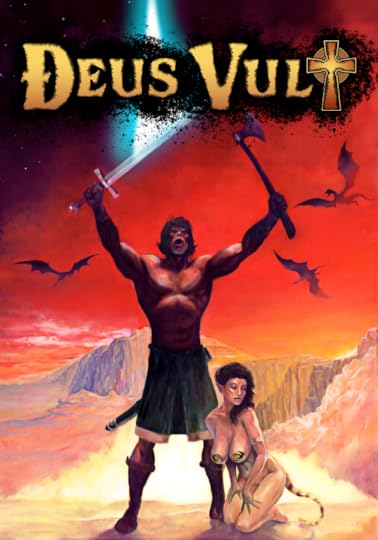
Been waiting for this for a long time: The crowdfunding campaign for Deus Vult by Jon Del Arroz, Jesse White, and Matthew Crotts is now live on IndieGoGo!
DEUS VULT!
A crusade into another realm…
…leads to the deadliest of evils.
Sir Domingo, Spanish Knight and Holy Crusader, is blessed with a vision on his return from his triumphant conquest in the Holy Land. The Holy Grail appears in the sky, leading him on an adventure to another realm where demons and monstrosities lay waste to all of creation.
He discovers a strange race of people called the Kityin, who seem more kin to Earth’s cats than they do humanity. He alone can lead them to salvation and away from the tyrannical rule of The Demon King.
Should he fail, not only the Kityin but all the people of all the realms will be destroyed!
DEUS VULT is a 66-page crusader fantasy graphic novel which will bring back memories of great comics like CONAN THE BARBARIAN and THE MIGHTY THOR.
The story is written by #1 Bestselling and award-winning Sci-Fi author, Jon Del Arroz, artist Jesse White, and colorist Matt Crotts with a special variant cover by our good friend Miss Sashi!
Jesse, if you recall, painted the fantastic cover to my book Dreamers & Misfits. Check out some samples of his comic-style artwork.
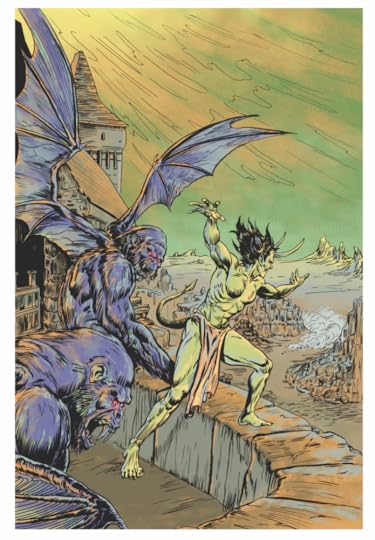

Simply gorgeous. Jon has written some of the best new comics around, and Matthew is a wonderful artist in his own right. This is an all-star squad of comics talent.
Once again, back it here. This is going to be a good one.
Further support Jesse and raise his profile–buy Dreamers & Misfits today.





